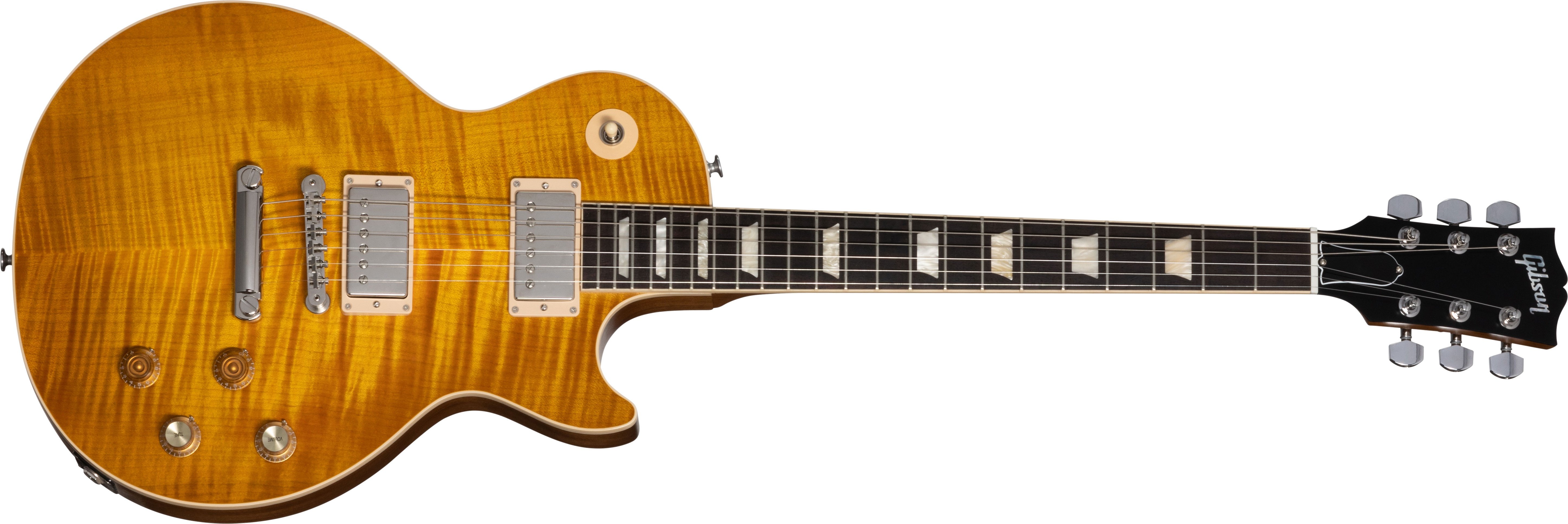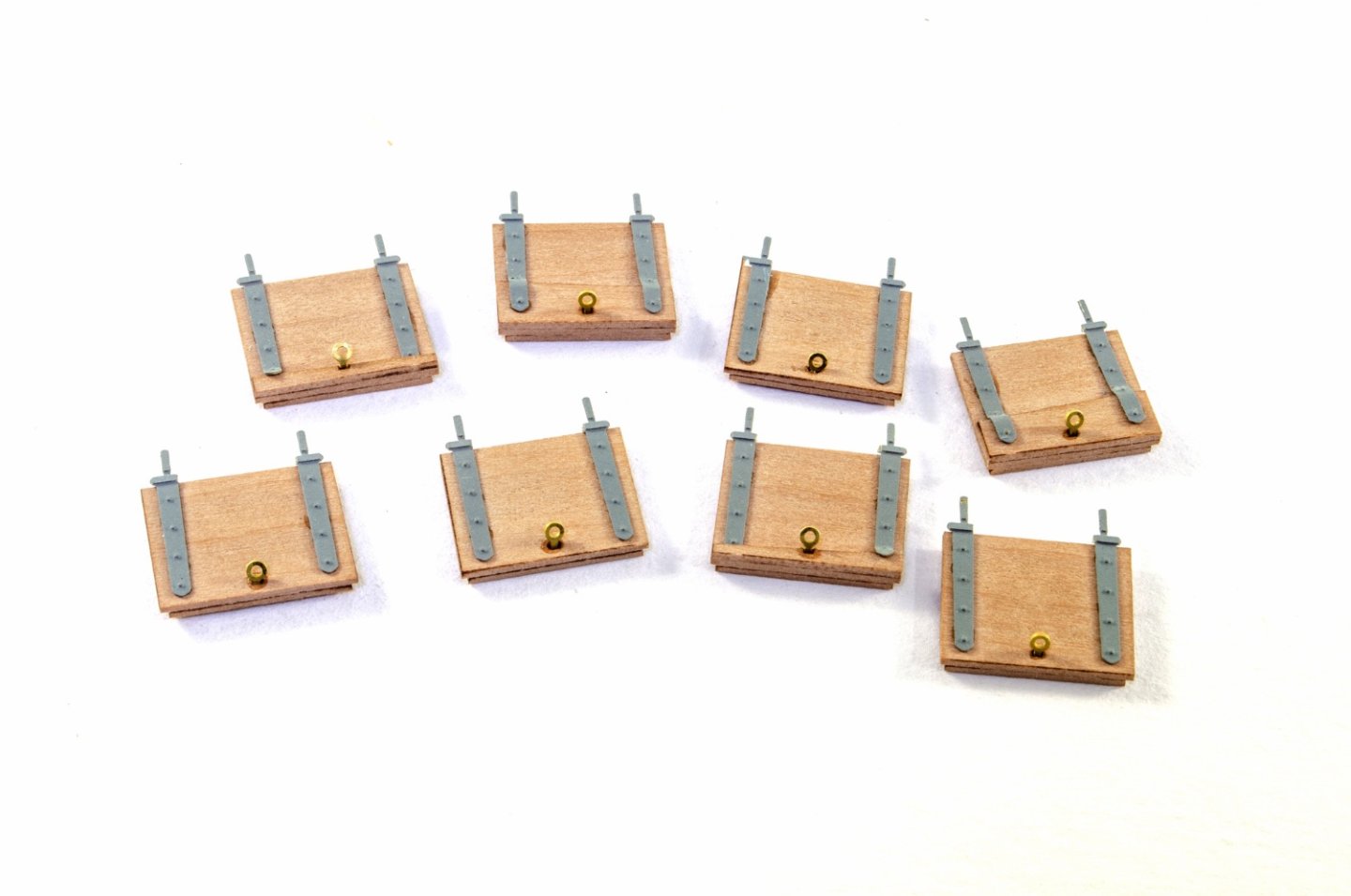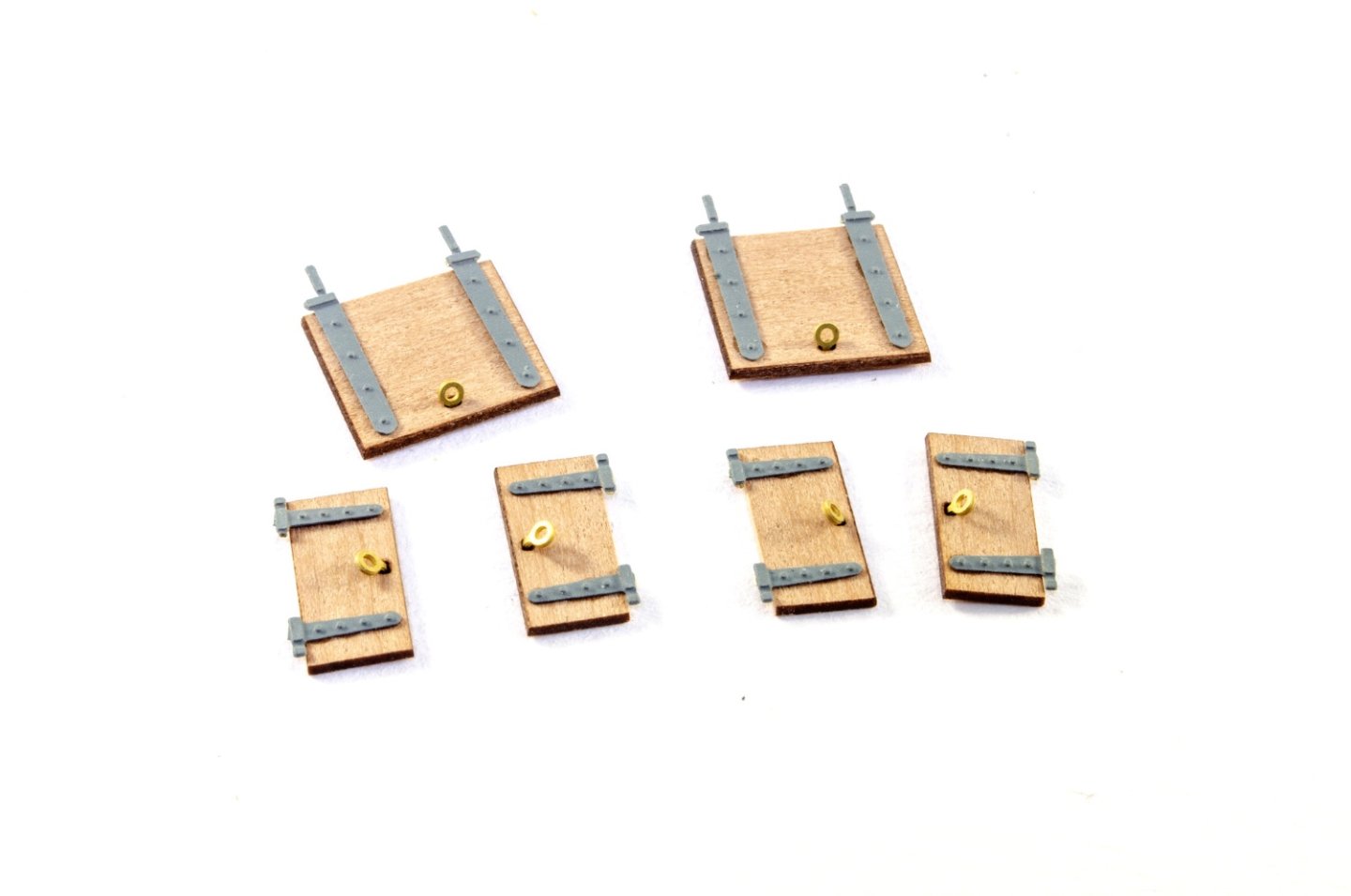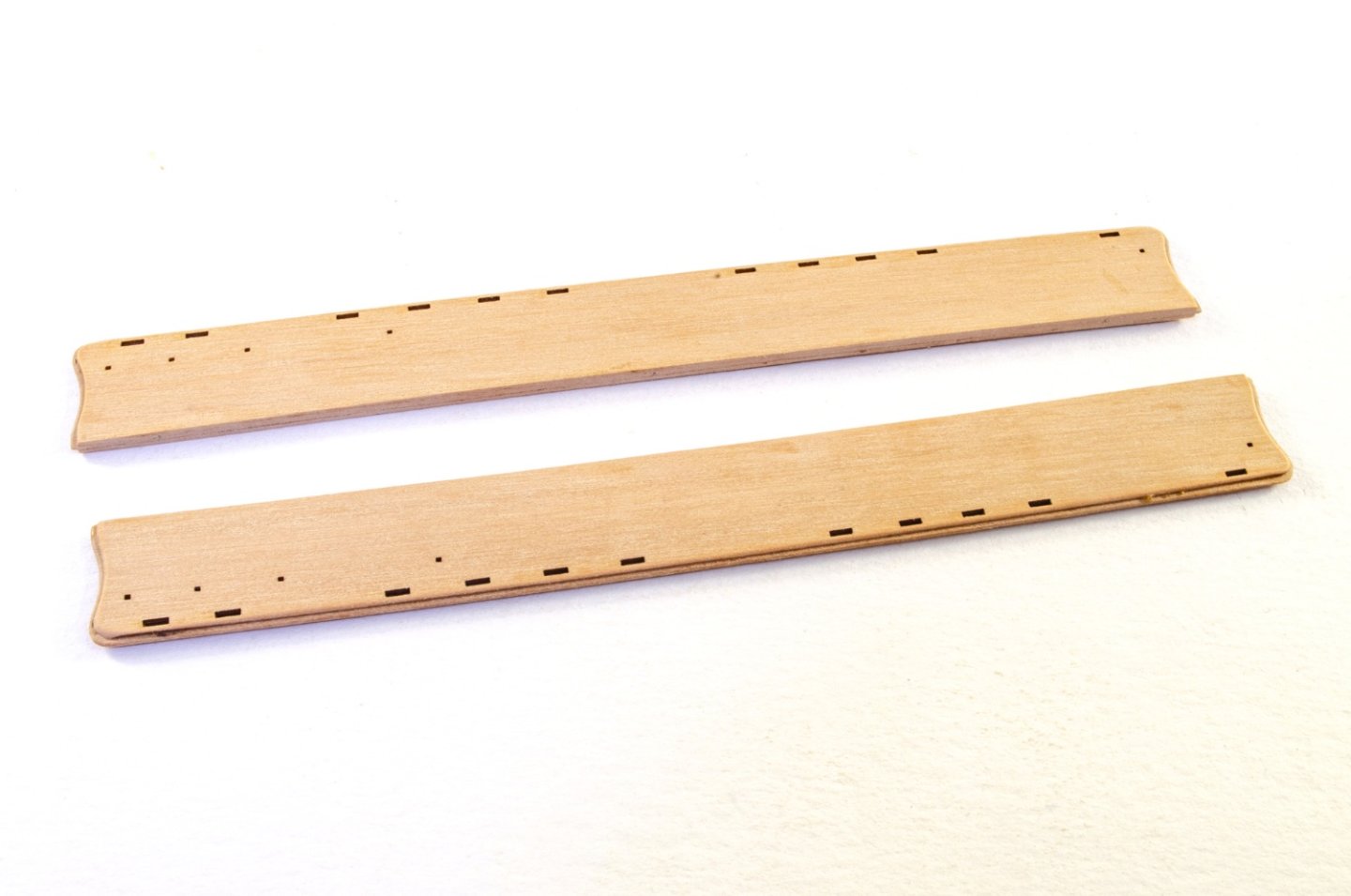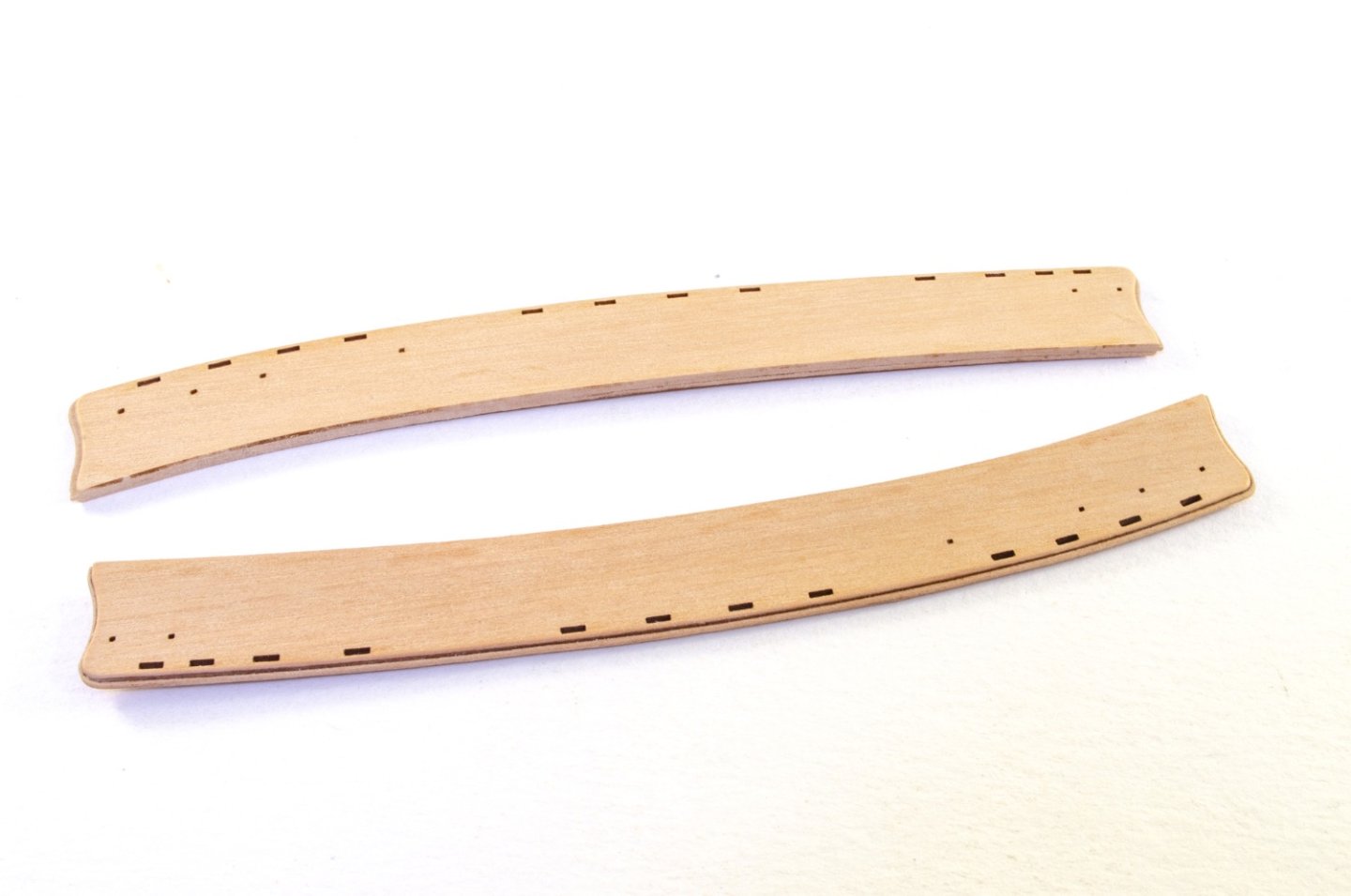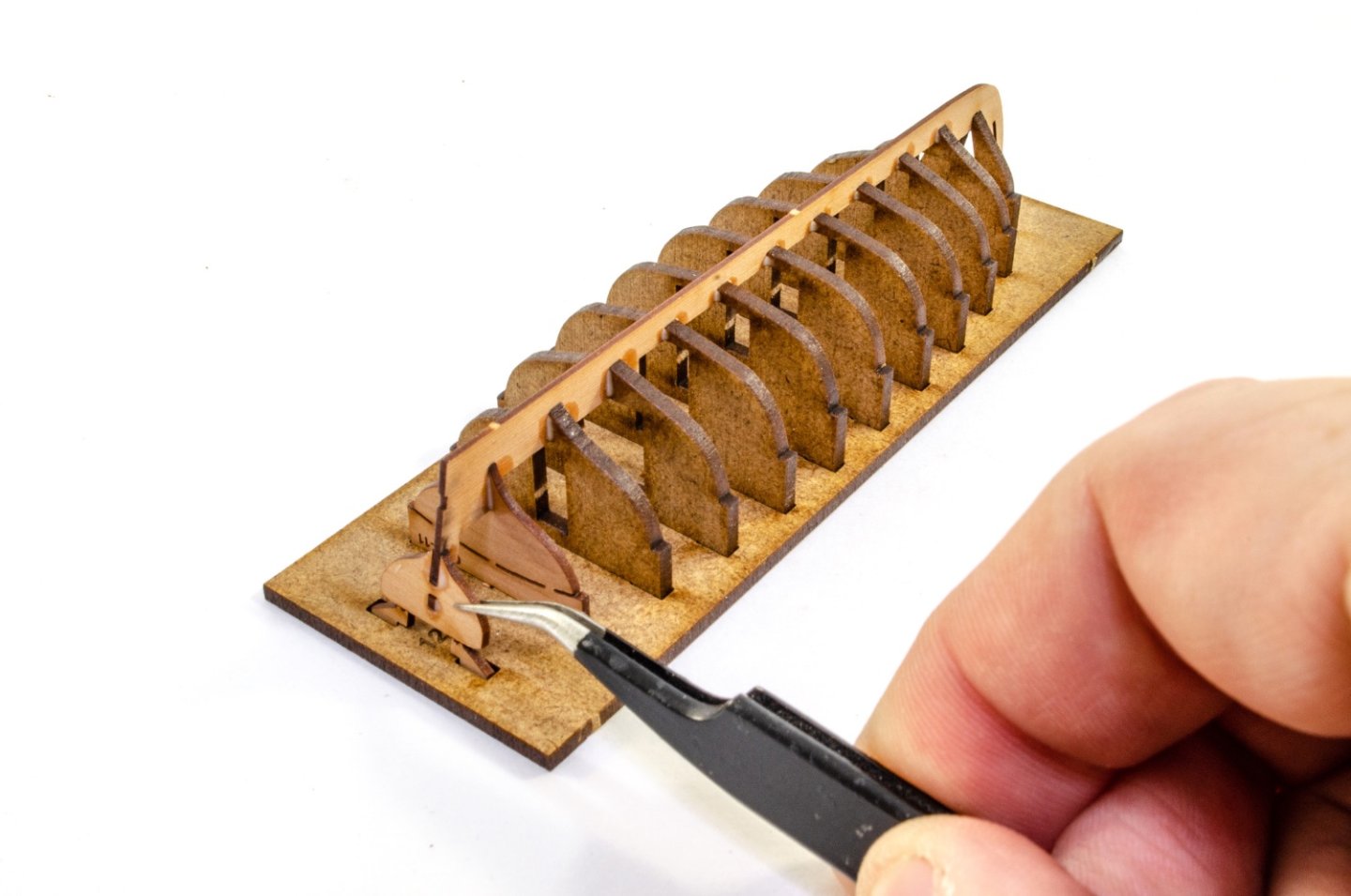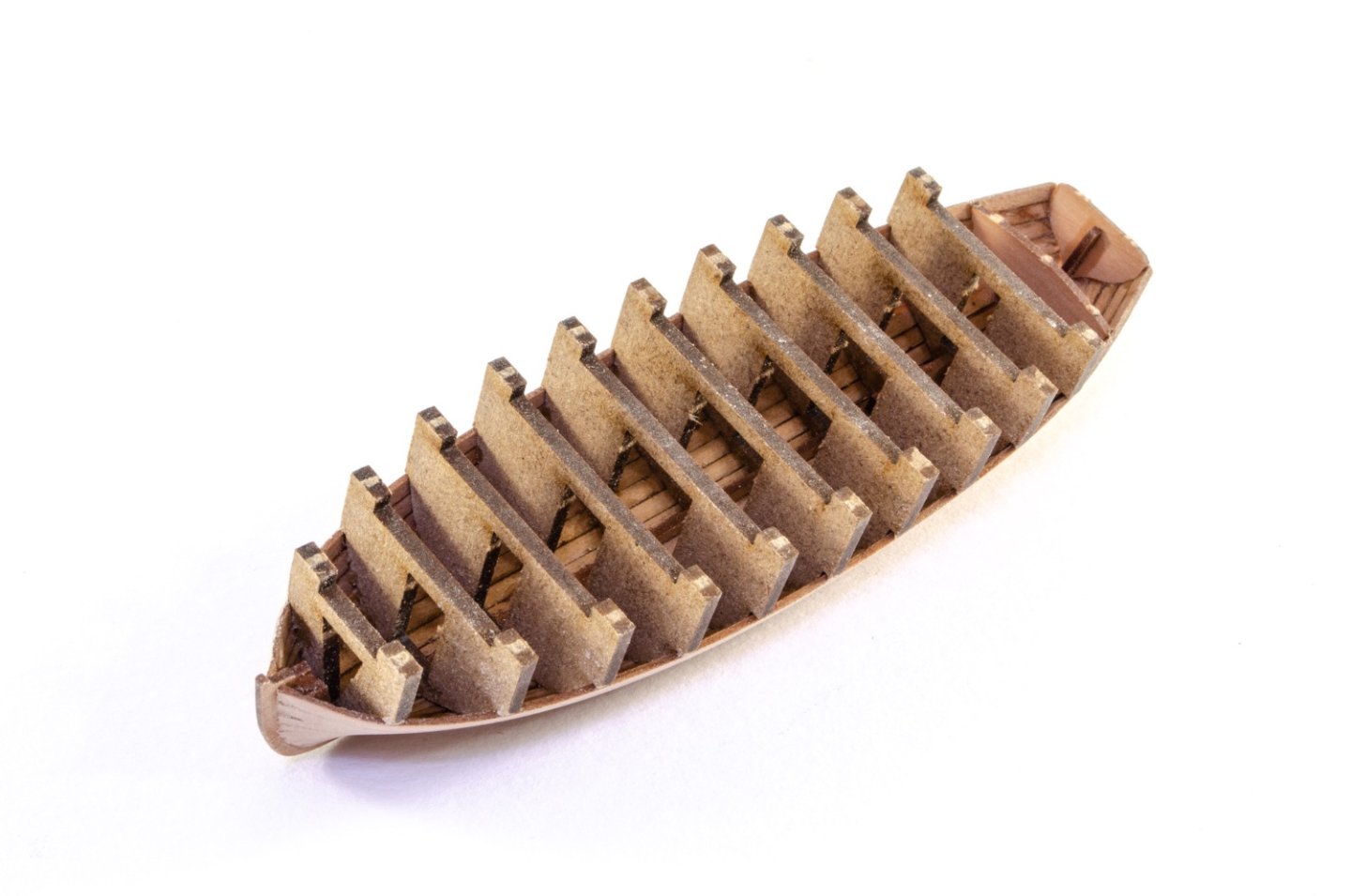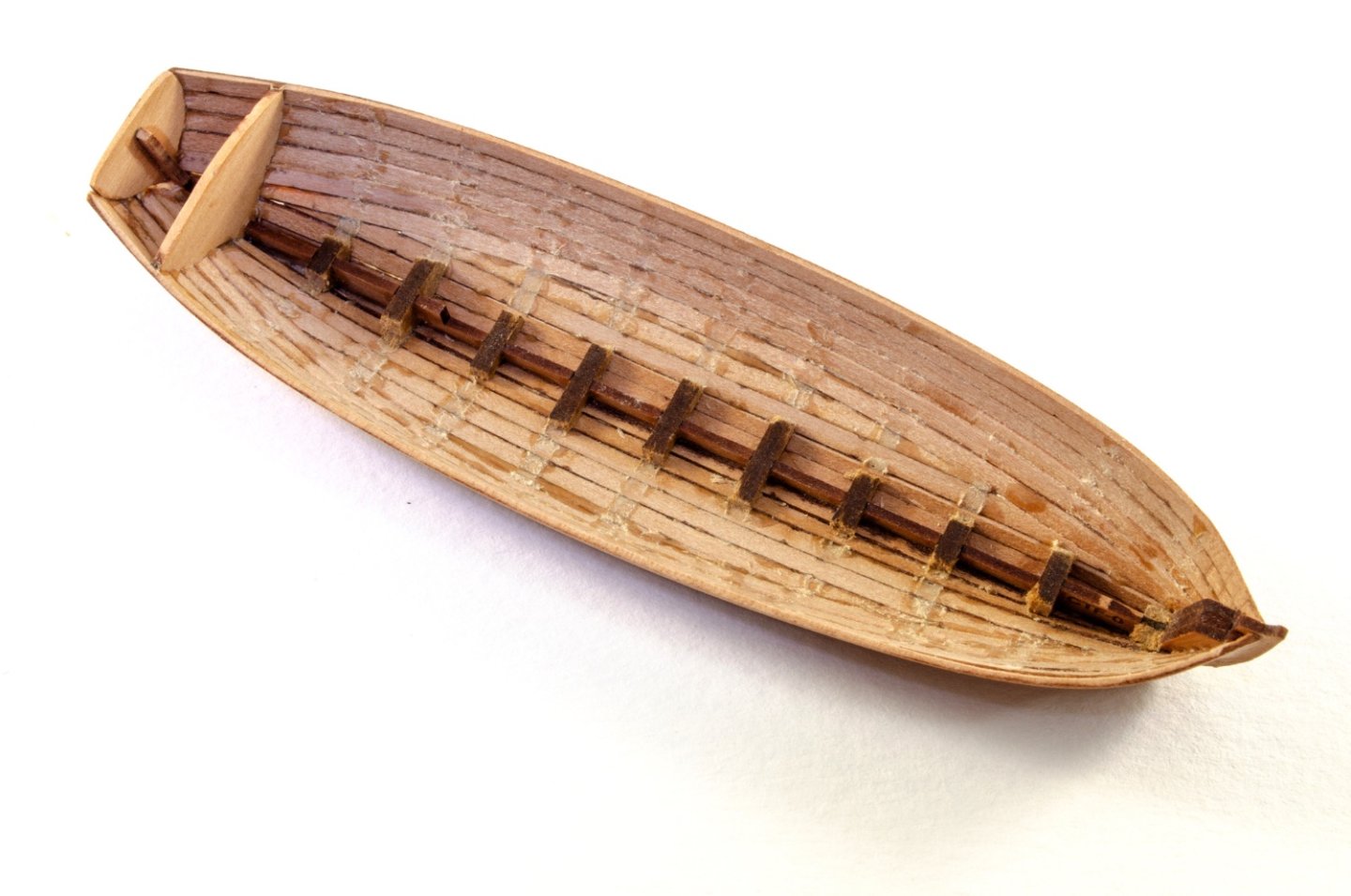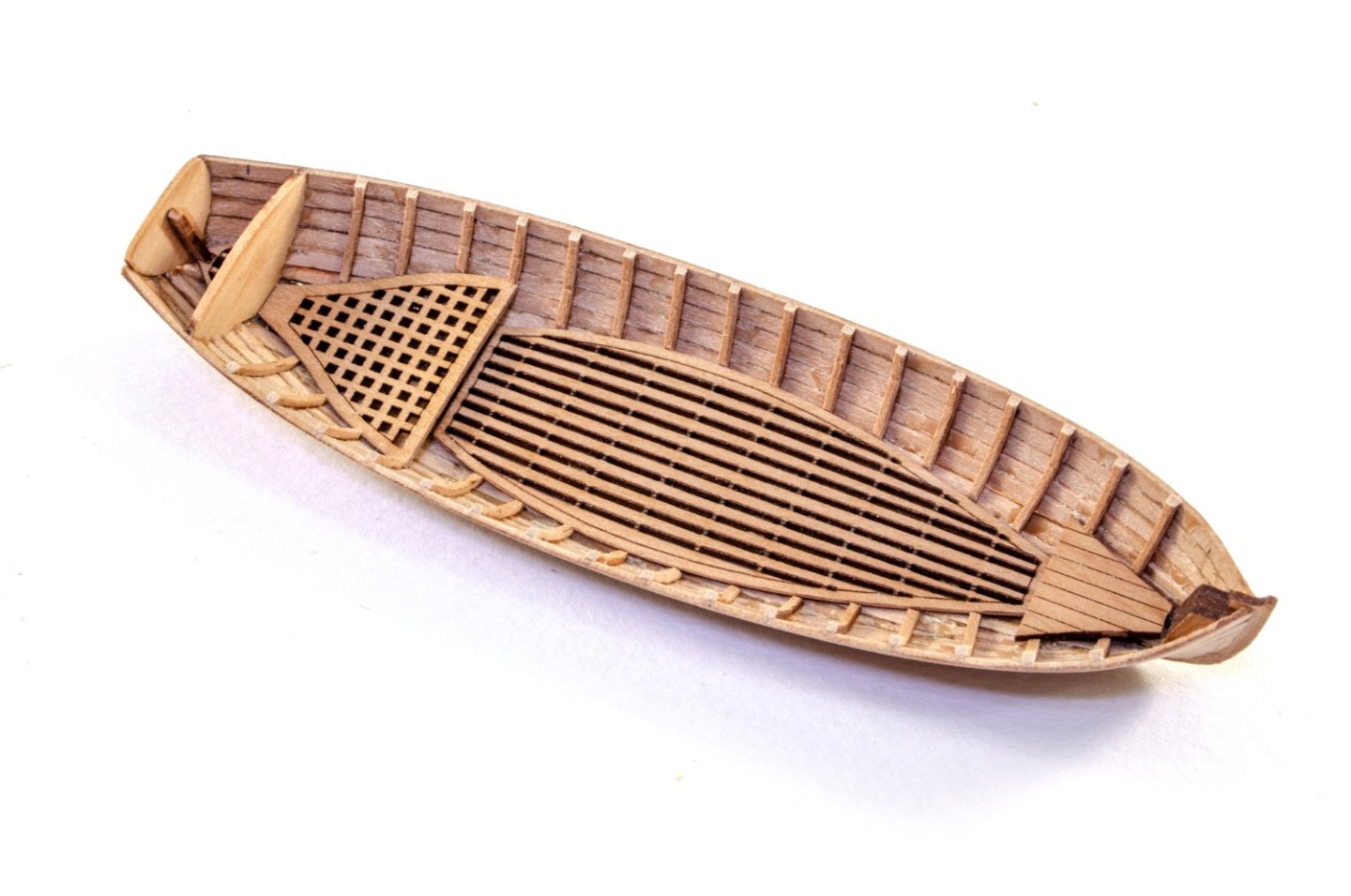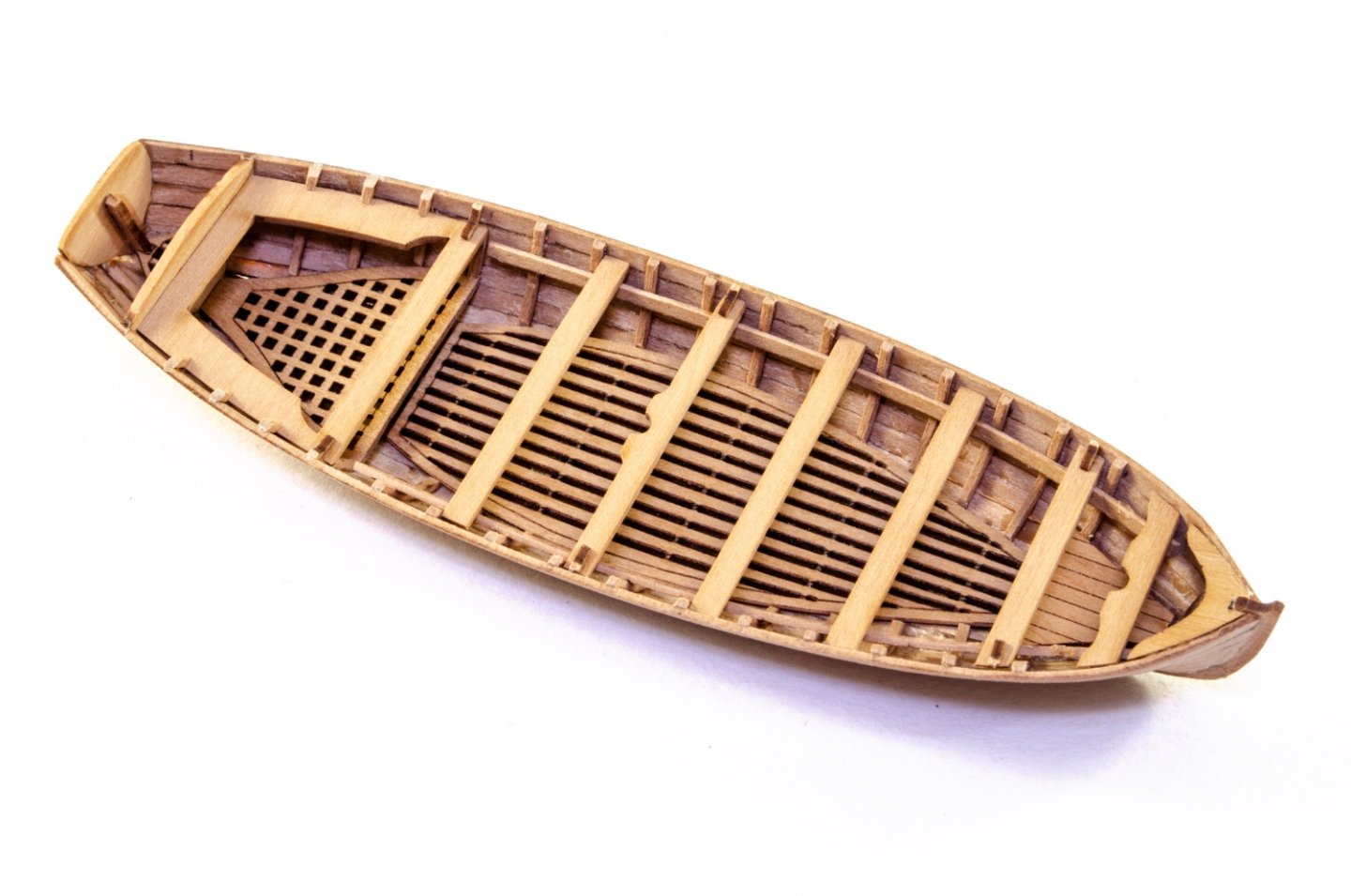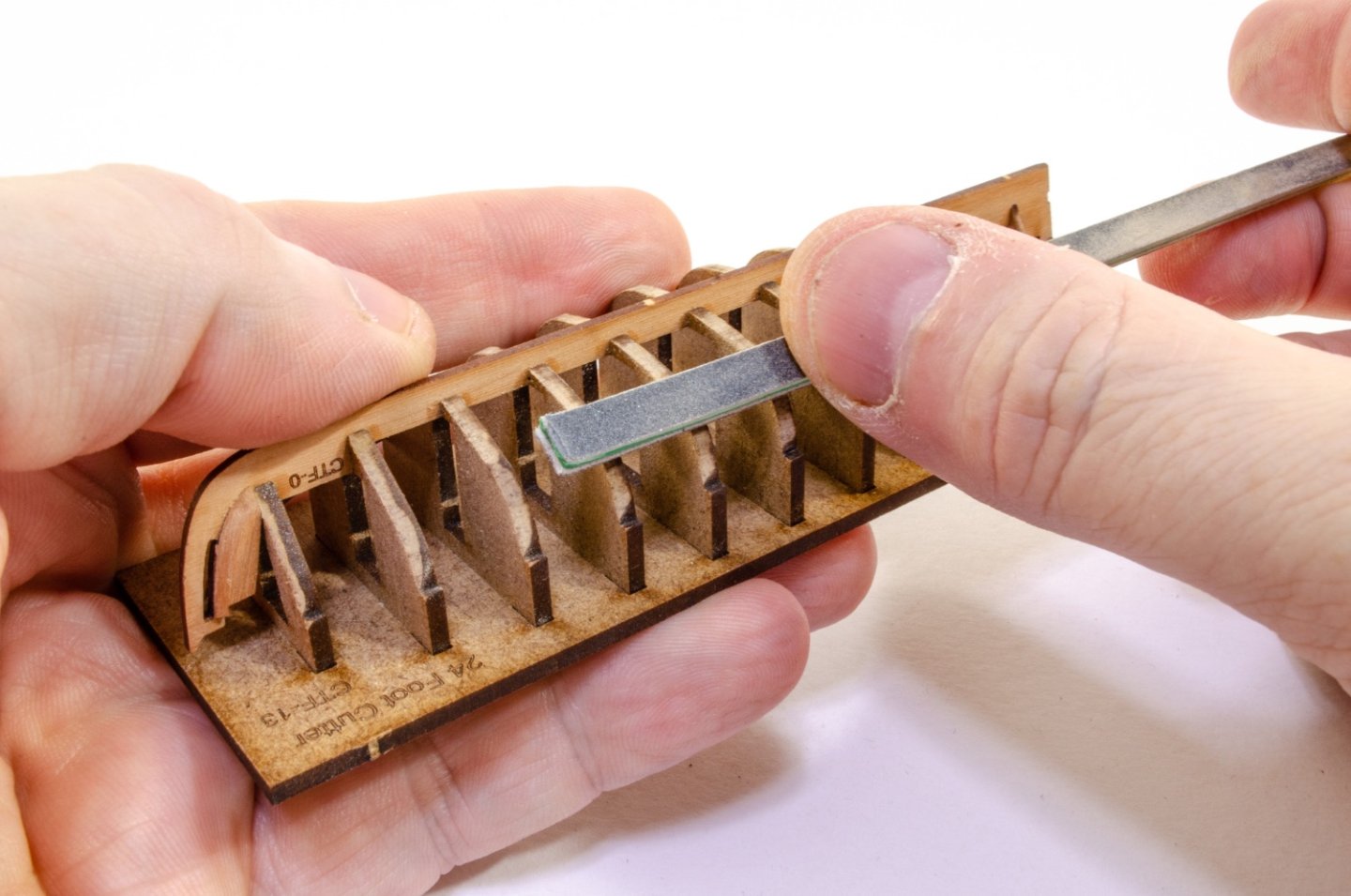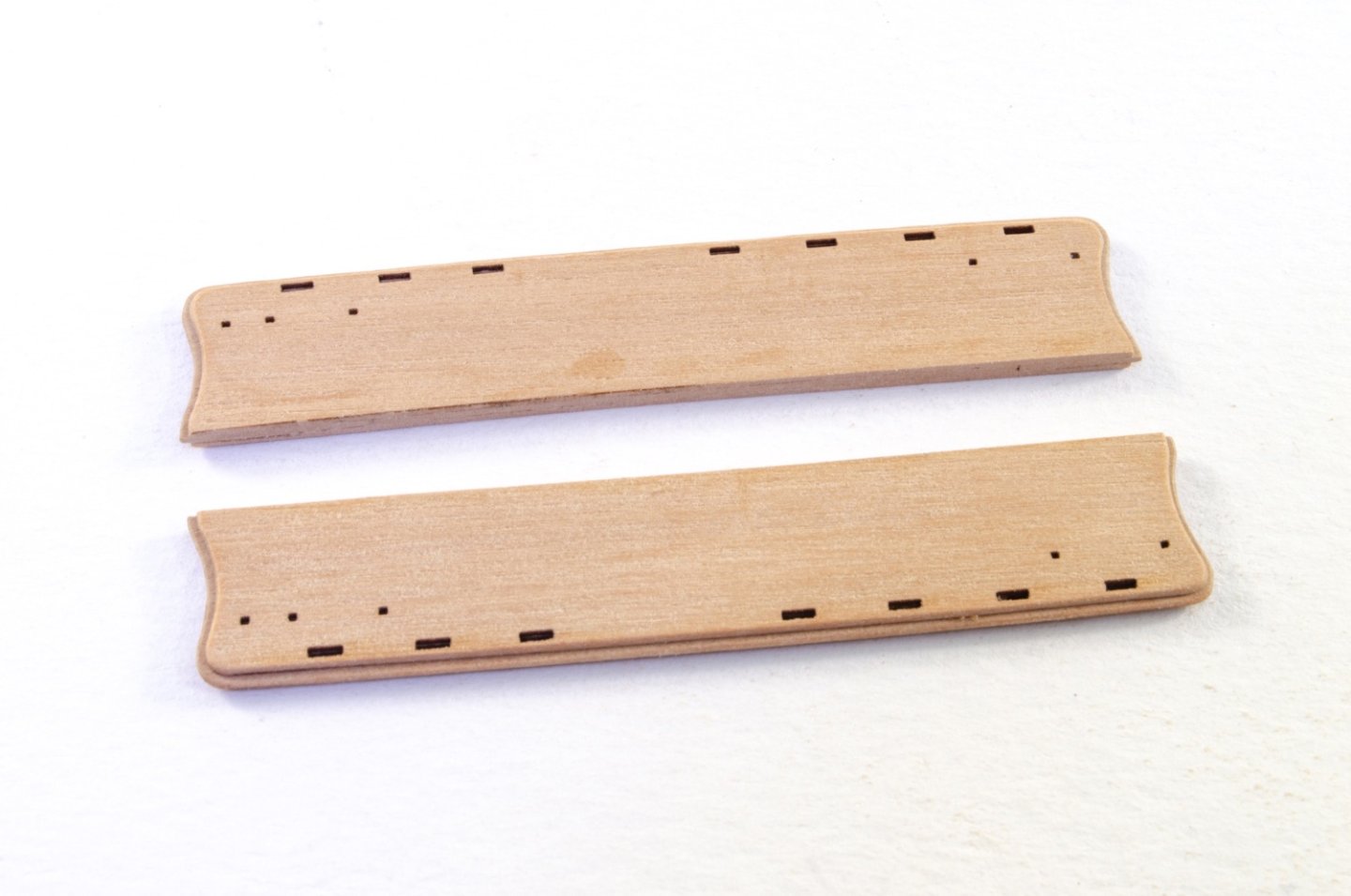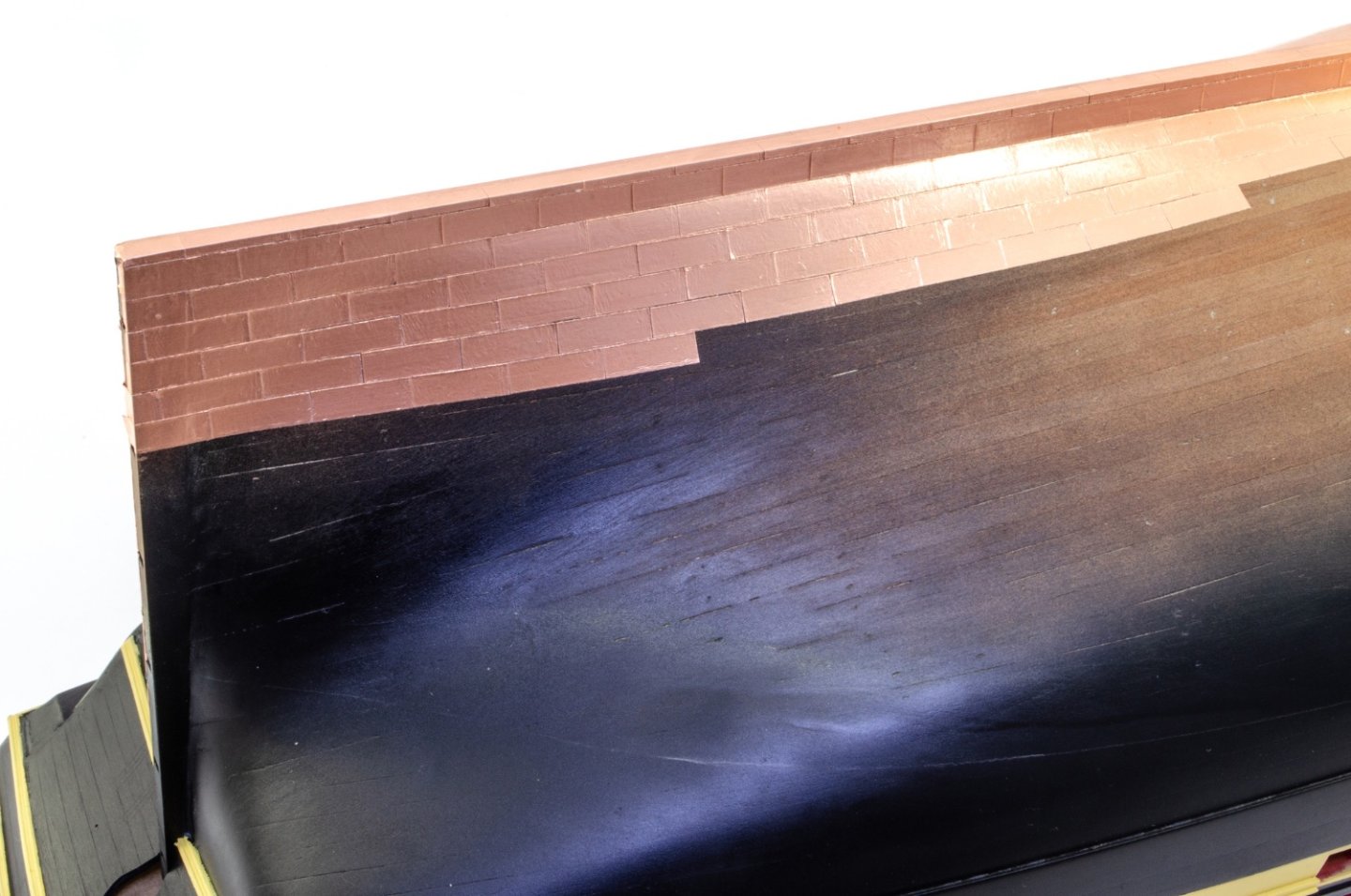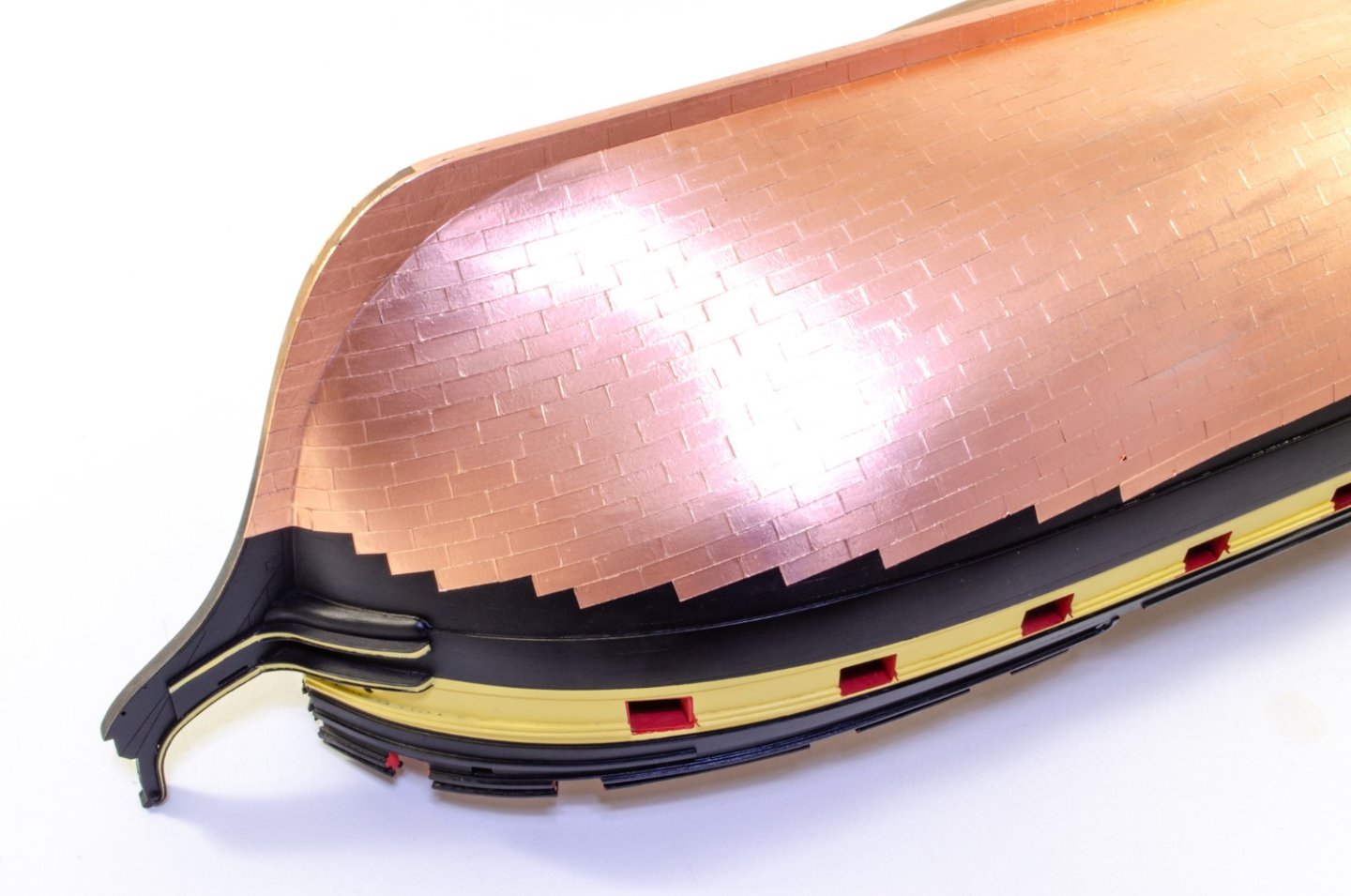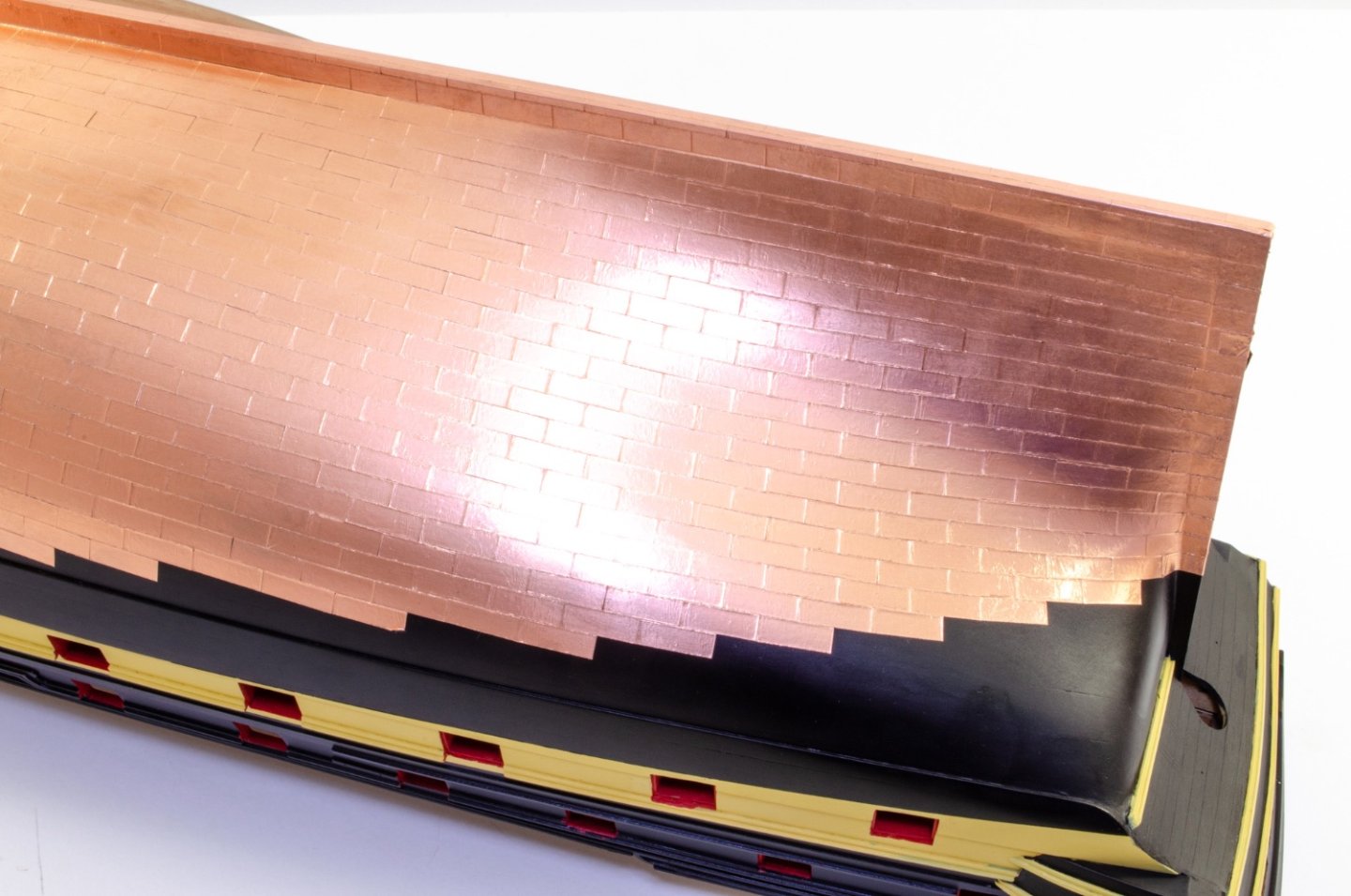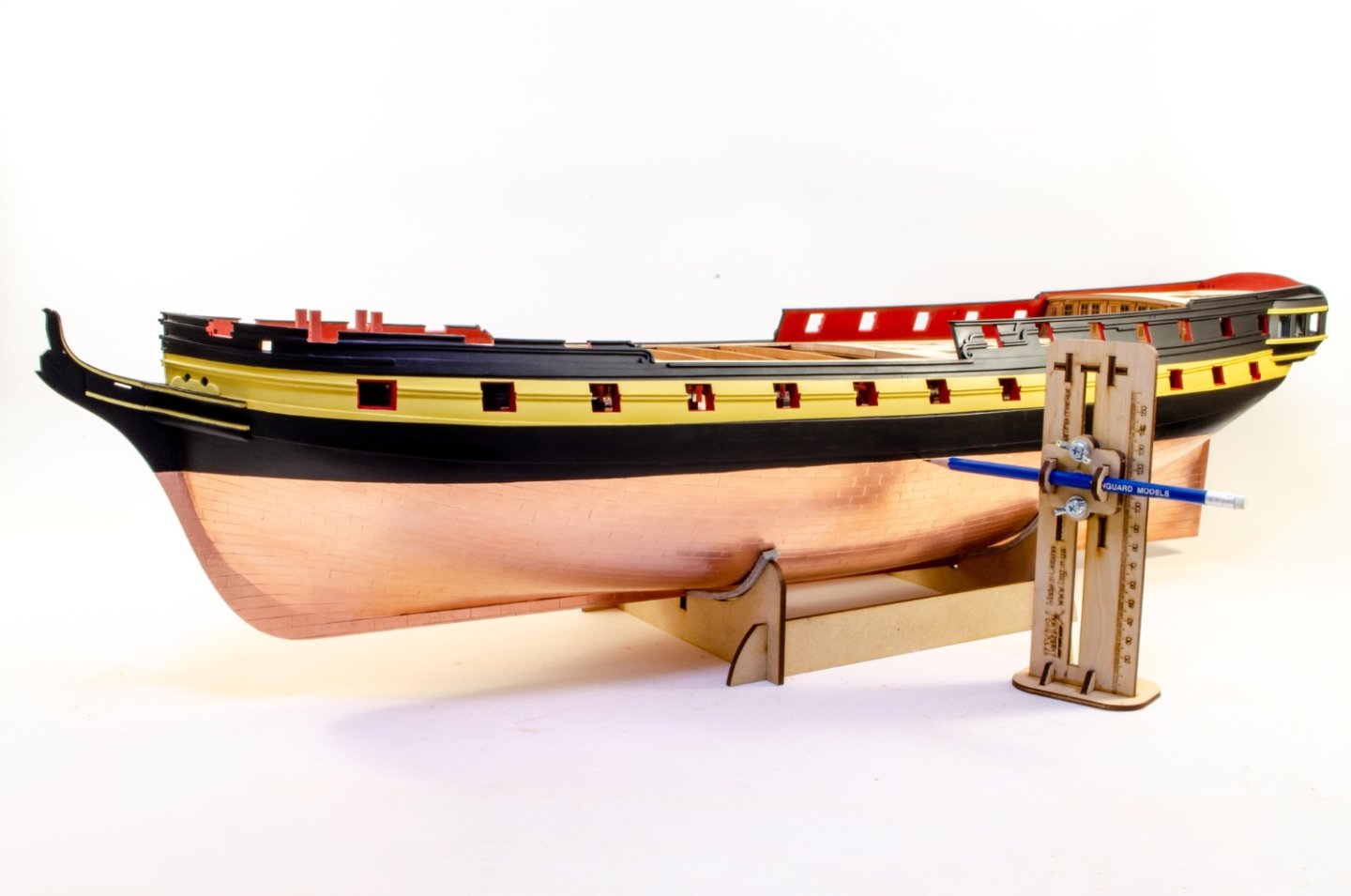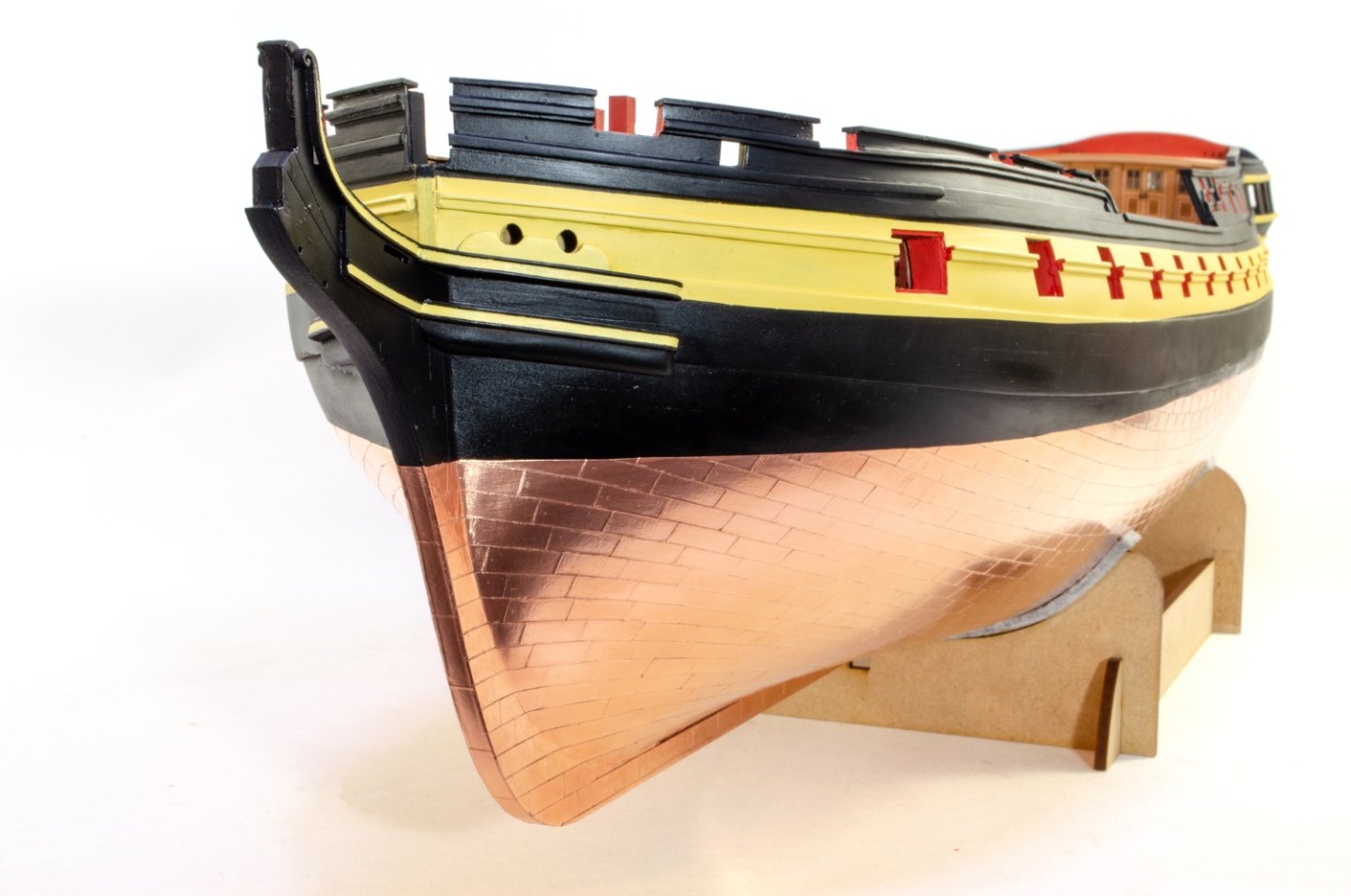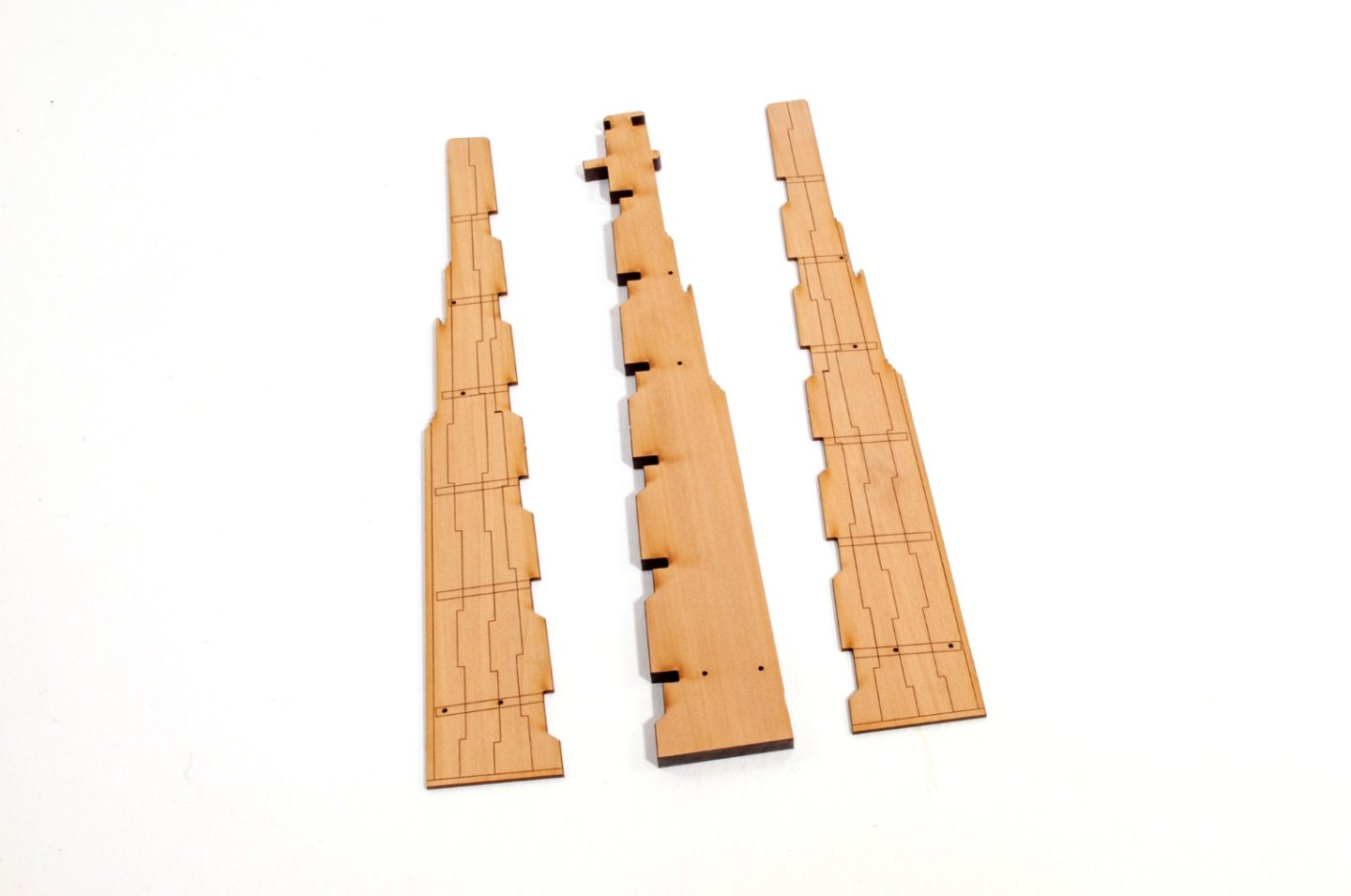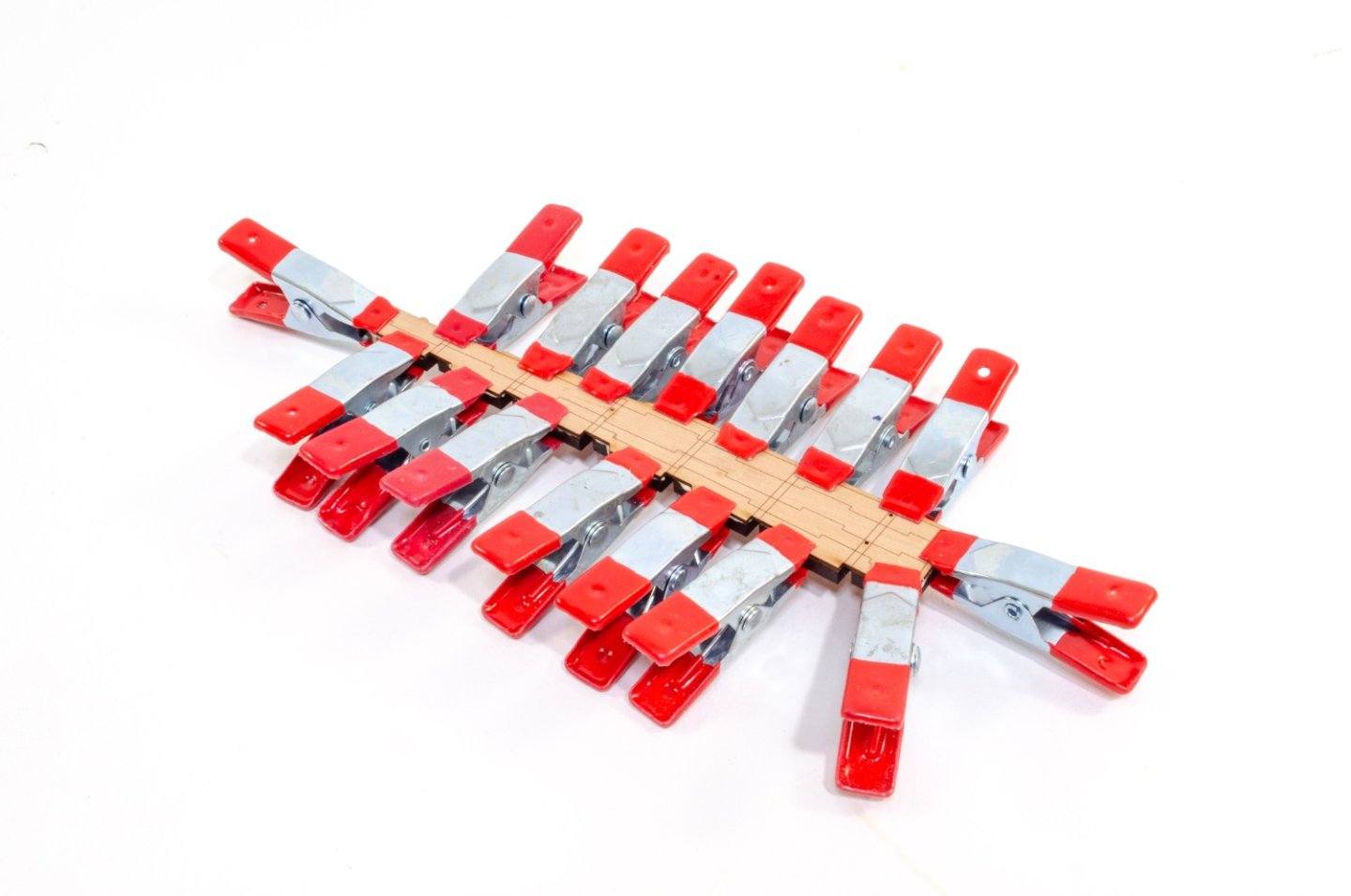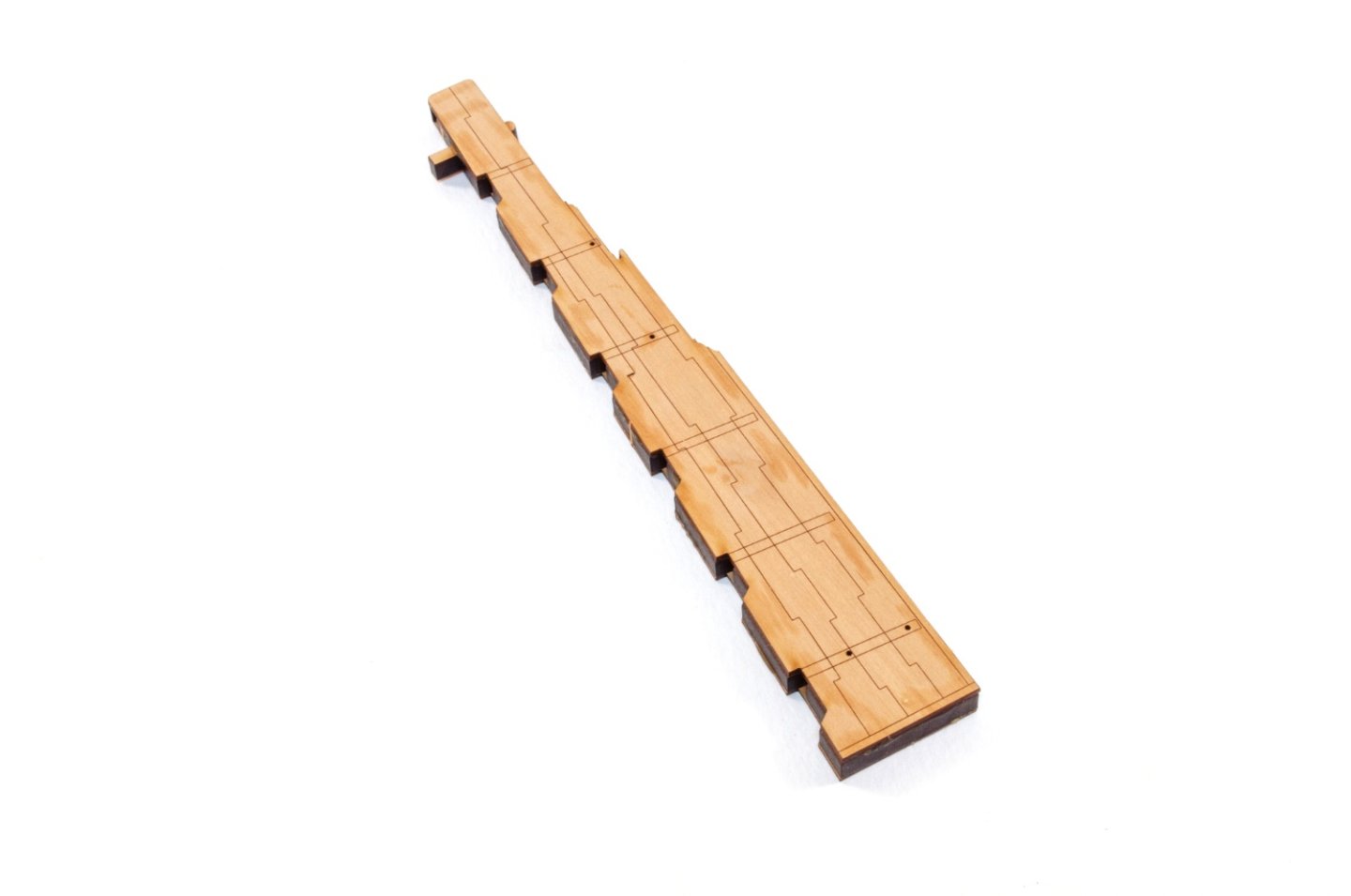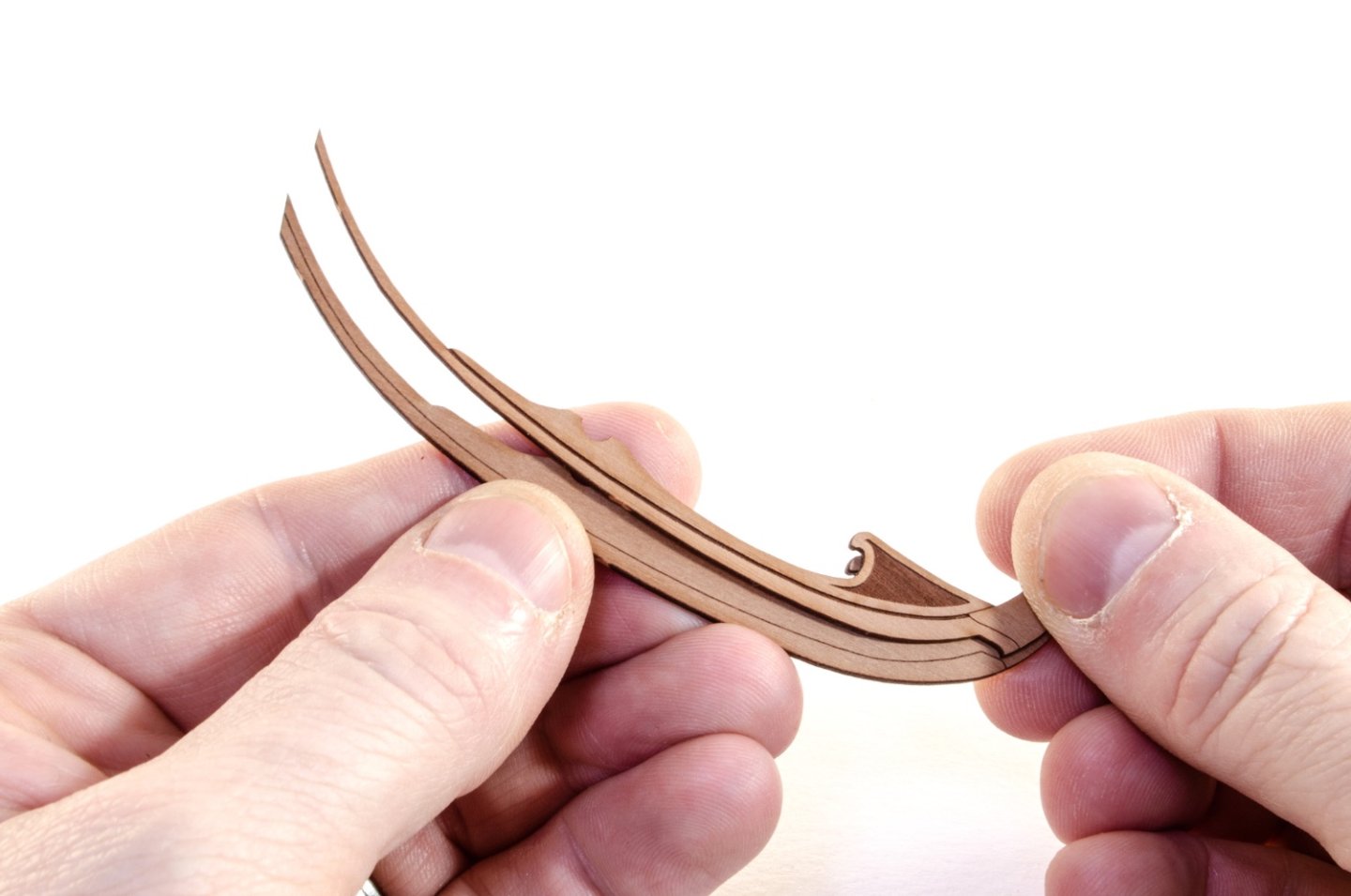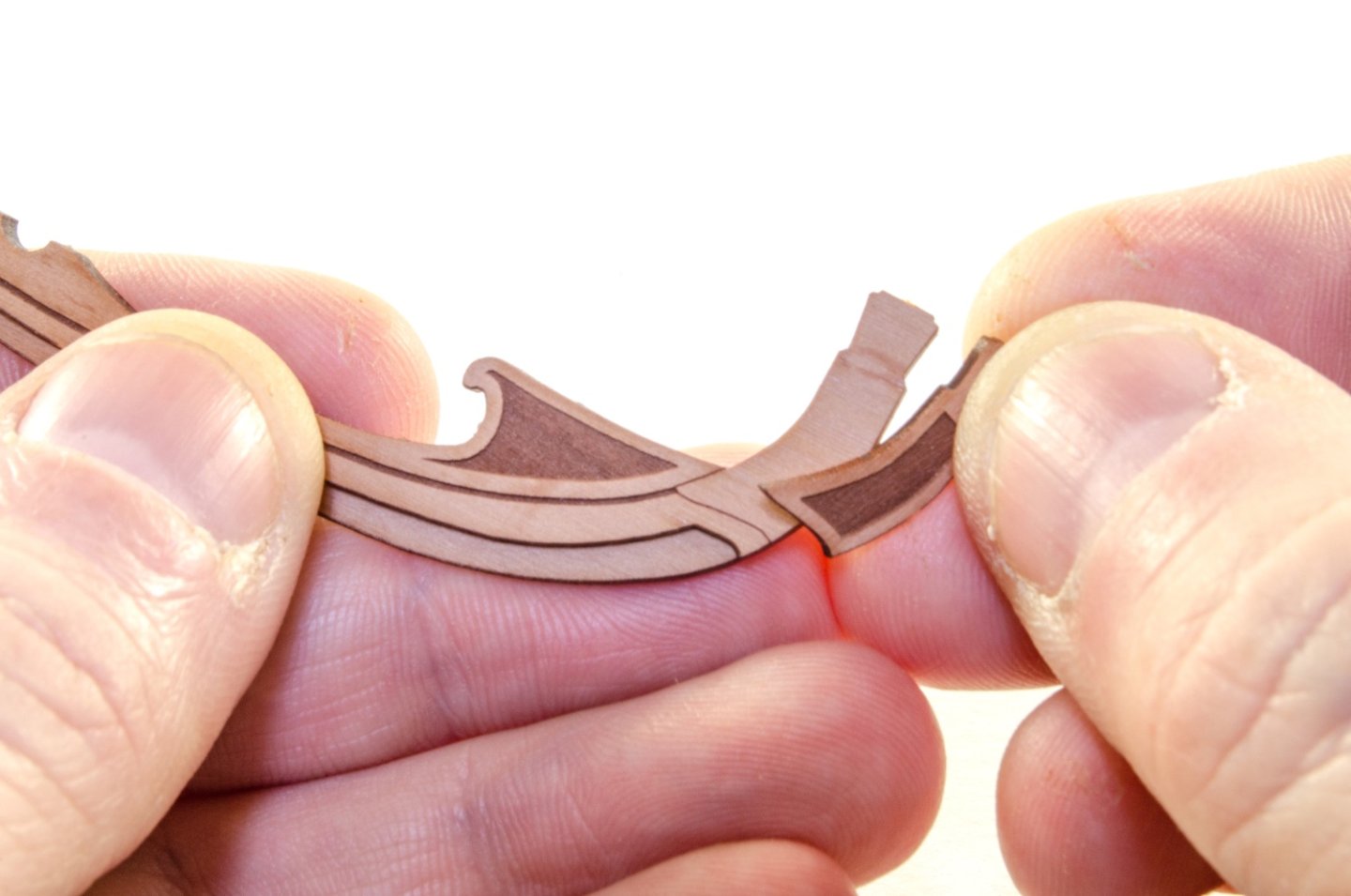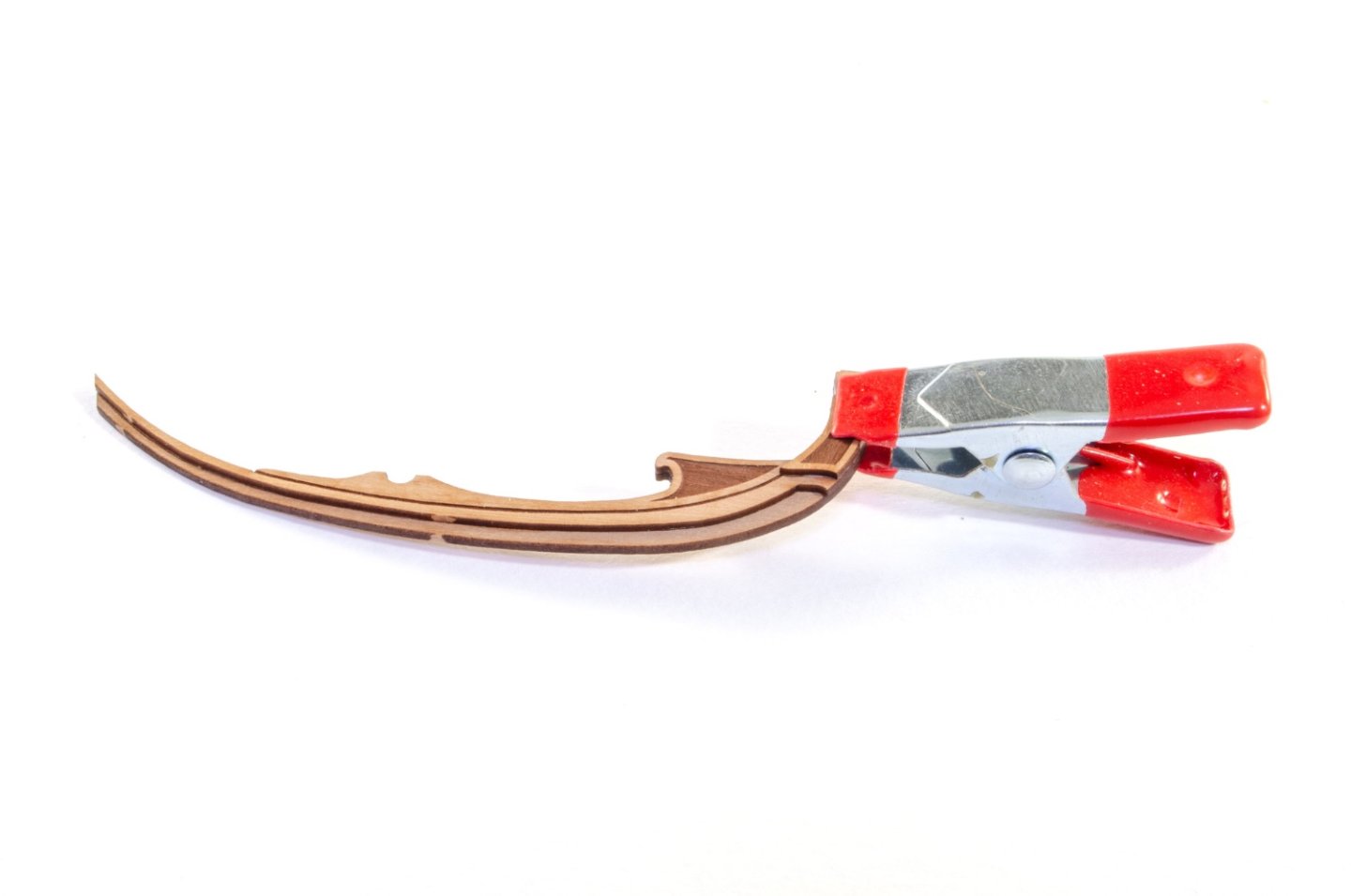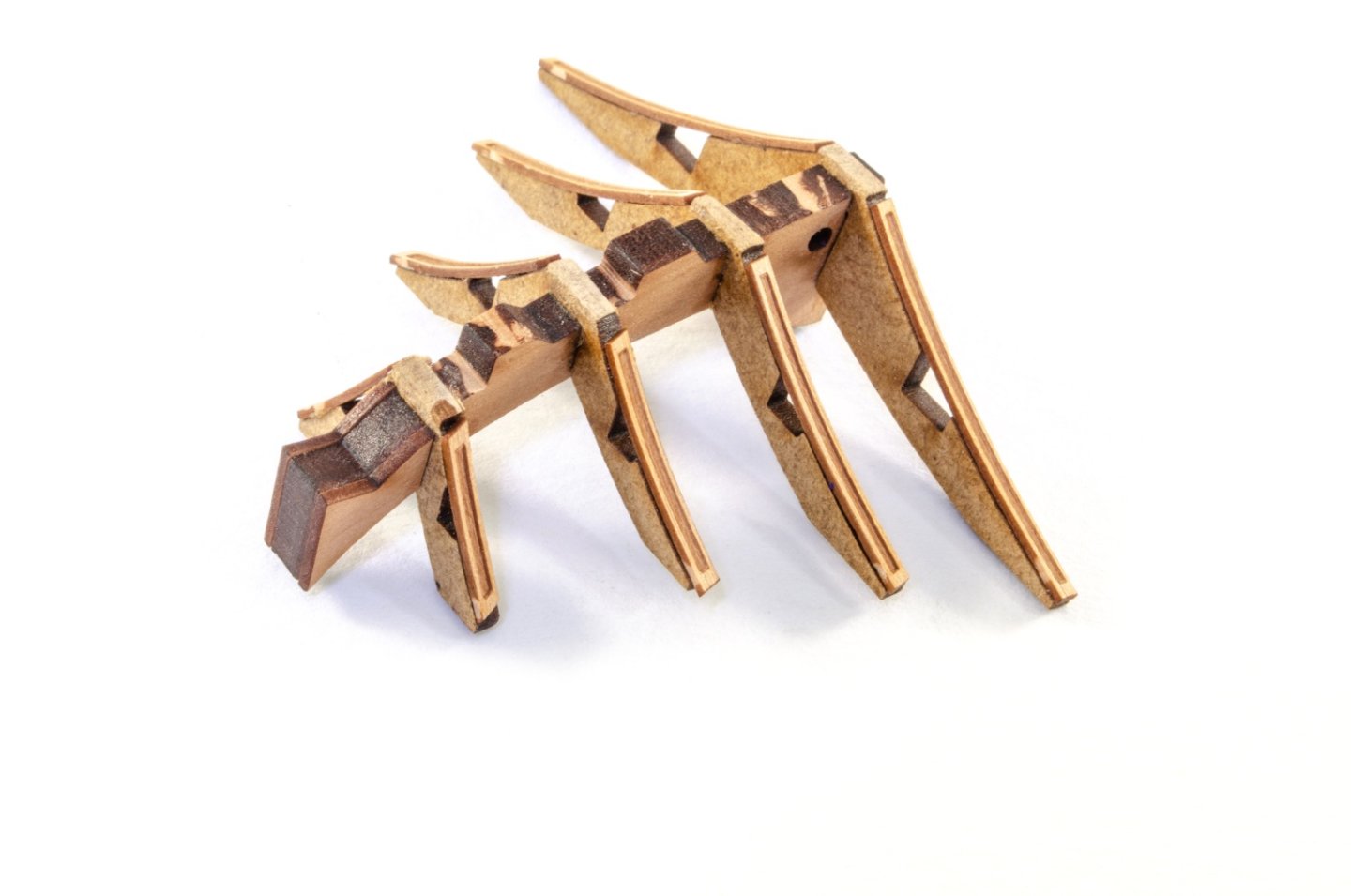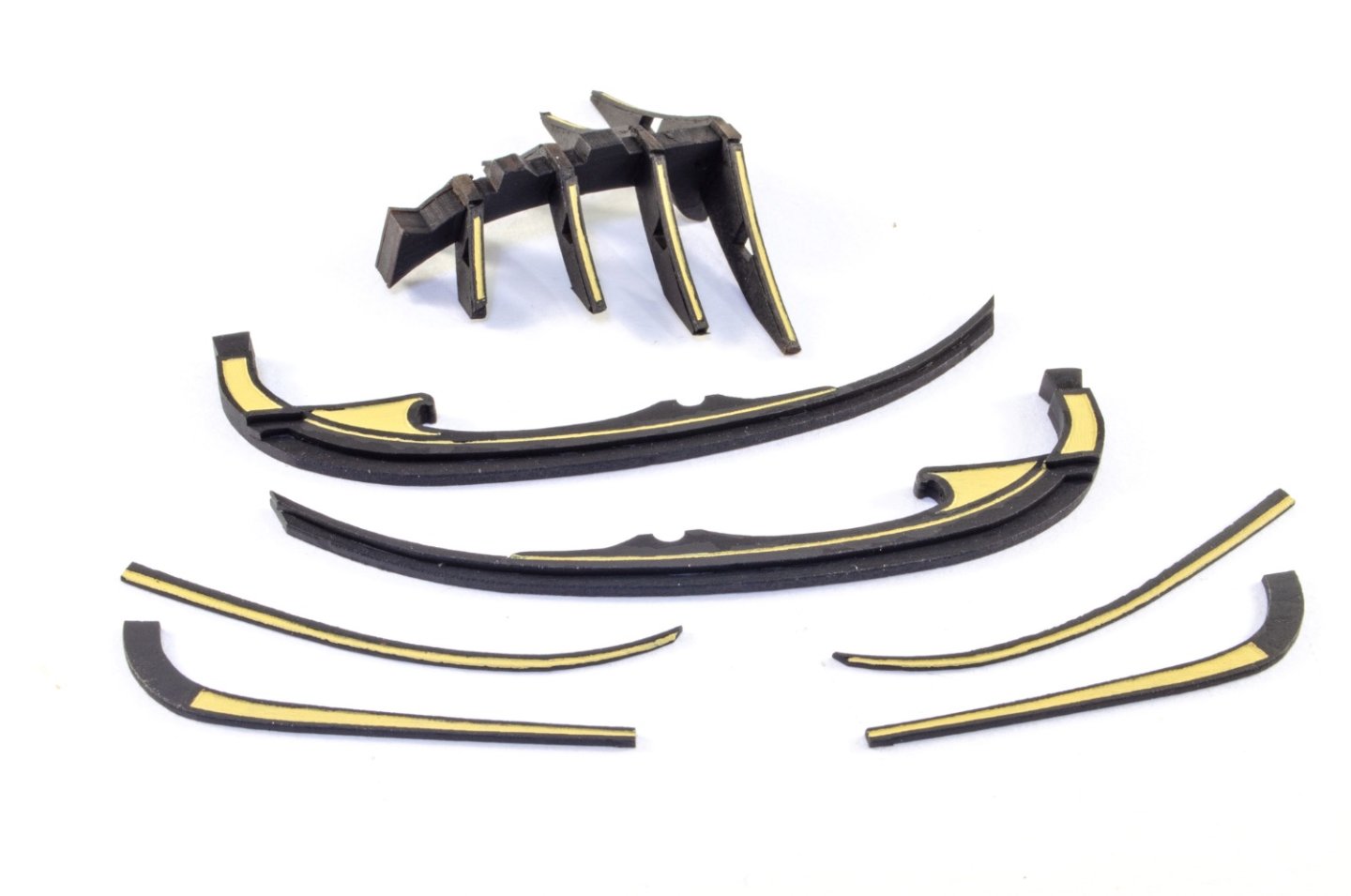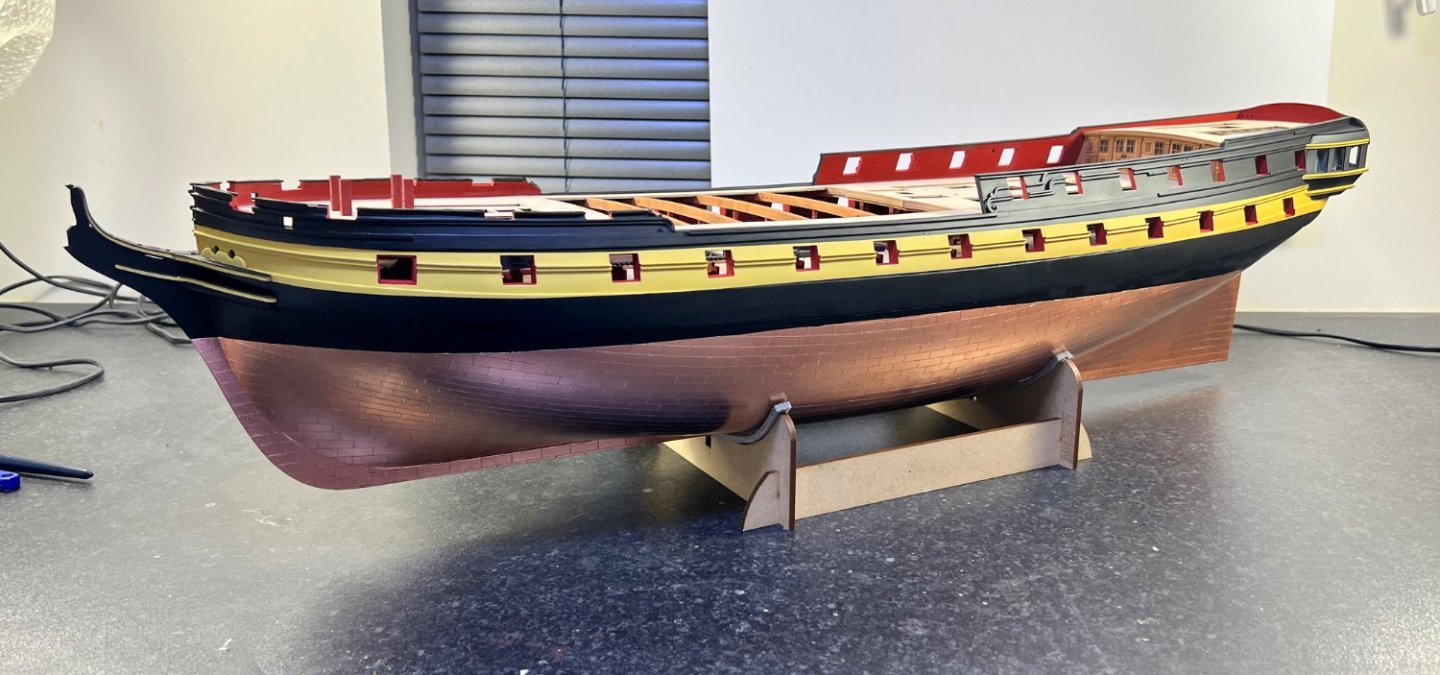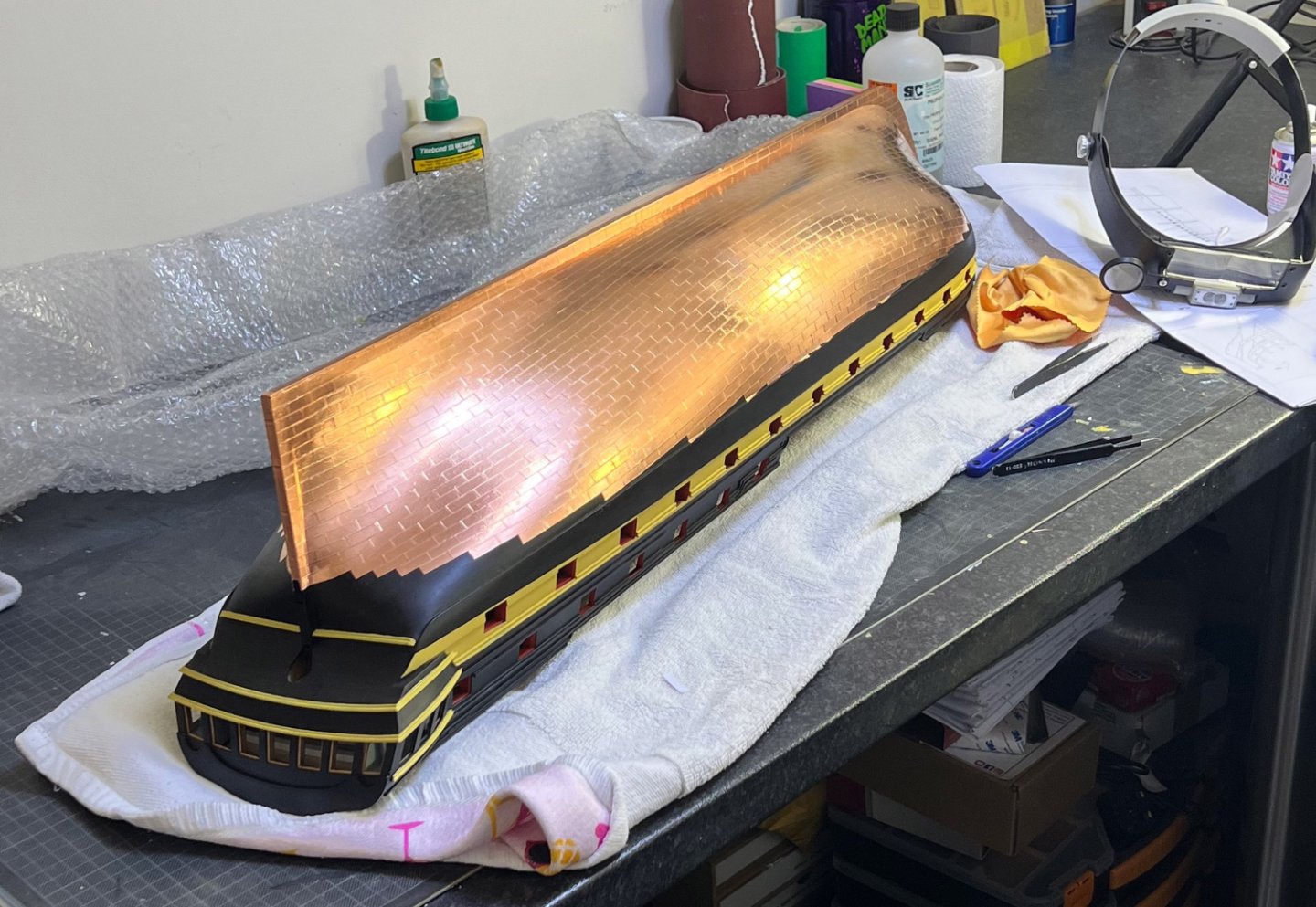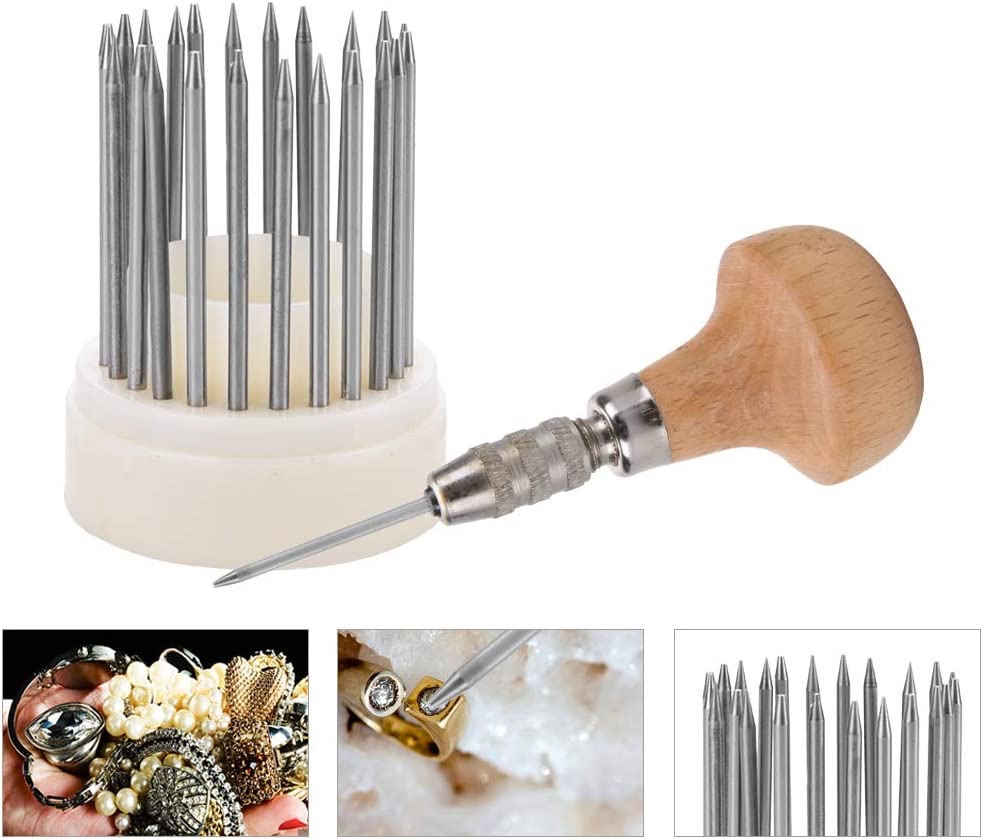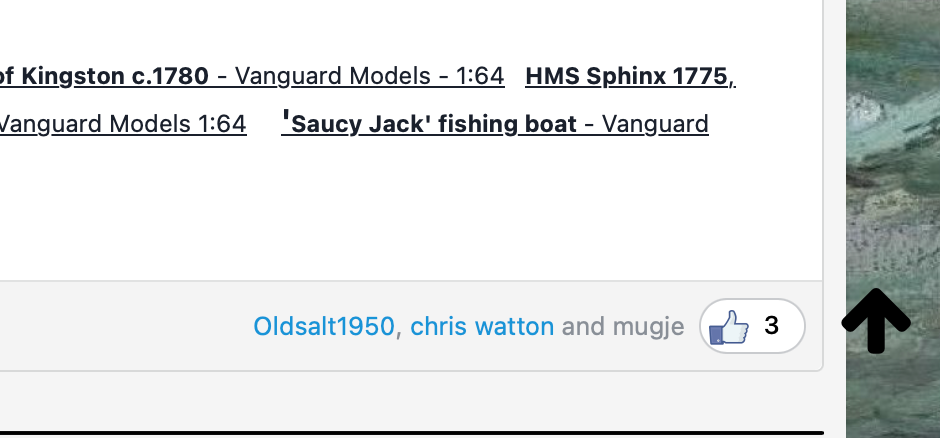-
Posts
6,064 -
Joined
-
Last visited
Content Type
Profiles
Forums
Gallery
Events
Everything posted by James H
-
...continued: Gun port lids. Very straightforward. The channels are made up from three layers, so look more realistic. The edges of these were rounded/chamfered as per the real thing. The reworked figurehead is complete! And here is my work so far on the 24' cutter, which is still ongoing. Many are already familiar with the construction of these little boats. Until next time.
- 488 replies
-
- Indefatigable
- Vanguard Models
-
(and 1 more)
Tagged with:
-
Update time. As you've seen recently, I've been doing the coppering using 6mm tape, cut into 18mm lengths. It's a little tedious, but perhaps less so that using PE, and it's also a little quicker. I coppered the hull in around 4 less than full days. There's no double banding on this.....just complete from keel to waterline. When all done, the copper was buffed down using cotton buds. The coppering was added above the slightly (and intentionally) lower waterline I added in silver pencil onto the black hull. I figured that adding a good two levels above that would be a reasonable indicator of 'enough'. It was as planned. With the copper added, I set the waterline tool again so I could draw along the copper plates this time. It needs to be remembered the the stern of this sits a little lower in the water than the bow, with the waterline increasing in depth from around 90mm to 95mm, bow to stern, along the full hull length.....so not parallel with the lower keel. With that done, I ran a fresh scalpel along the whole pencil line and peeled off the excess above the line. The keel and stern edges were then coppered too. The rudder is a very simple affair. I'm actually coppering this at the moment, but don't have those photos yet. The headrails are built up from various laminates of pear, and there are other single piece rails. All have engravings which must be painted in ochre, whilst the main colour is obviously black.
- 488 replies
-
- Indefatigable
- Vanguard Models
-
(and 1 more)
Tagged with:
-
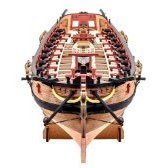
Log to PDF Tool
James H replied to VTHokiEE's topic in Using the MSW forum - **NO MODELING CONTENT IN THIS SUB-FORUM**
Pinned! -
That's real useful info. I might just go with that!
- 488 replies
-
- Indefatigable
- Vanguard Models
-
(and 1 more)
Tagged with:
-
I do have several bottles of that stuff, but I'm thinking something that imparts an eggshell finish and is more suited specifically to copper. Future is a gloss finish, and not too much for scale.
- 488 replies
-
- Indefatigable
- Vanguard Models
-
(and 1 more)
Tagged with:
-
I work as a Senior Tech in local government.
- 488 replies
-
- Indefatigable
- Vanguard Models
-
(and 1 more)
Tagged with:
-
I'll do a proper update this weekend, but here's a quick phone photo of the coppered and trimmed hull. Other work I've been doing is finishing up the 24' cutter, painting the timberhead rails and building channels...as well as many other things. She will come together pretty quickly, but I do need to protect this copper from tarnishing.
- 488 replies
-
- Indefatigable
- Vanguard Models
-
(and 1 more)
Tagged with:
-
That is sort of ongoing as a possible plugin. Our forum uses proprietary software, and although we can make amendments etc. these things are best done by uploading as an app/module, and not by tinkering with pages of code that aren't ours.
- 542 replies
-
- Sphinx
- Vanguard Models
-
(and 3 more)
Tagged with:
-

backing up a log
James H replied to Knocklouder's topic in Using the MSW forum - **NO MODELING CONTENT IN THIS SUB-FORUM**
I think here is fine. Many people will have seen it here and can continue following. -
No, nothing has changed. It's as it's shown. I removed some char from top of parts, so things will look different.
- 426 replies
-
- Vanguard Models
- Sphinx
-
(and 1 more)
Tagged with:
-

The New Up Arrow Button!
James H replied to Matt D's topic in Using the MSW forum - **NO MODELING CONTENT IN THIS SUB-FORUM**
-

backing up a log
James H replied to Knocklouder's topic in Using the MSW forum - **NO MODELING CONTENT IN THIS SUB-FORUM**
No, we have nothing that can do that, or access via third-party plugins. Browsers are generally equipped to export as either a web page or PDF, and also to print whole pages you are on. It make take time over a large build log, but there's nothing we can do about that. We keep several backups of MSW at all times, and backups are made 4 times per week, into several different locations. If you feel you need to back up your build log, for whatever reason, you'll have to do this manually. -
I think the point of this is that Chris has made it abundantly clear many times what his plans are with regard to his larger naval vessels (period etc), and that countless requests for ironclads and yachts, as well as the multitude of typically unknown vessels, simply won't fly. Discussion should revolve around announcements/releases etc. On this note, Chris has asked me to lock this topic so he can start a fresh one. This one is currently 78 pages!
-

backing up a log
James H replied to Knocklouder's topic in Using the MSW forum - **NO MODELING CONTENT IN THIS SUB-FORUM**
The forum software won't cater to that, but it's easy enough through your browser. Ok, I'm using Safari on Mac here, but this should be available on most, if not all browsers. Just export each page as a PDF and save to your computer. -
I would paint the swastika first, using masks, then add the hardware over it and paint. BUT, Amati have supplied the kit with the last known iteration before it was sunk. At that time it had no swastikas. They were painted over.
-
It's great to see you back! You were one of the very first members of MSW 1.0!!
-
***Please note*** Any further posts regarding chain pumps will be deleted from hereon in. It's superfluous to the discussion and serves only to derail what I'm trying to achieve here. I've even received PMs demanding to know why I removed member's posts after me needing to cull my topic (for the third time!). It must stop. Now.
- 488 replies
-
- Indefatigable
- Vanguard Models
-
(and 1 more)
Tagged with:
-
- 488 replies
-
- Indefatigable
- Vanguard Models
-
(and 1 more)
Tagged with:
-
I must admit that the thought of running a rivet tool, freehand over the hull, would fill me with dread. If I opt to rivet the hull, I think I'll do one plate at a time with a beading tool. I'm quite used to that method for adding rivet lines to large 1:32 airframes.
- 488 replies
-
- Indefatigable
- Vanguard Models
-
(and 1 more)
Tagged with:
-
It certainly works faster and is more forgiving. If I get a plate slightly wrong, I can just reposition it or throw it away and add a new one. No more CA gel, but you also don't get the nail marks (if you wanted them). These can be added with a rivet tool from VM or a beading tool.
- 488 replies
-
- Indefatigable
- Vanguard Models
-
(and 1 more)
Tagged with:
About us
Modelshipworld - Advancing Ship Modeling through Research
SSL Secured
Your security is important for us so this Website is SSL-Secured
NRG Mailing Address
Nautical Research Guild
237 South Lincoln Street
Westmont IL, 60559-1917
Model Ship World ® and the MSW logo are Registered Trademarks, and belong to the Nautical Research Guild (United States Patent and Trademark Office: No. 6,929,264 & No. 6,929,274, registered Dec. 20, 2022)
Helpful Links
About the NRG
If you enjoy building ship models that are historically accurate as well as beautiful, then The Nautical Research Guild (NRG) is just right for you.
The Guild is a non-profit educational organization whose mission is to “Advance Ship Modeling Through Research”. We provide support to our members in their efforts to raise the quality of their model ships.
The Nautical Research Guild has published our world-renowned quarterly magazine, The Nautical Research Journal, since 1955. The pages of the Journal are full of articles by accomplished ship modelers who show you how they create those exquisite details on their models, and by maritime historians who show you the correct details to build. The Journal is available in both print and digital editions. Go to the NRG web site (www.thenrg.org) to download a complimentary digital copy of the Journal. The NRG also publishes plan sets, books and compilations of back issues of the Journal and the former Ships in Scale and Model Ship Builder magazines.

